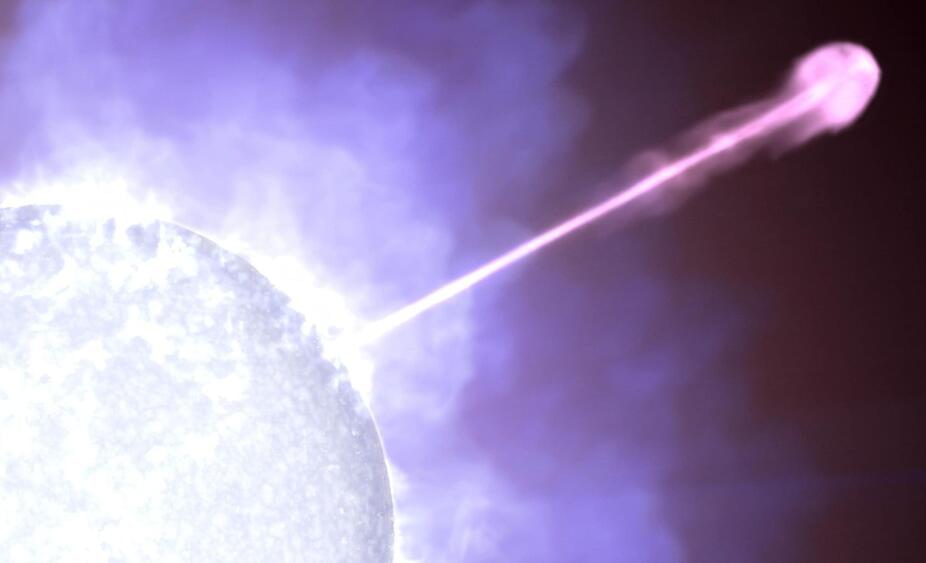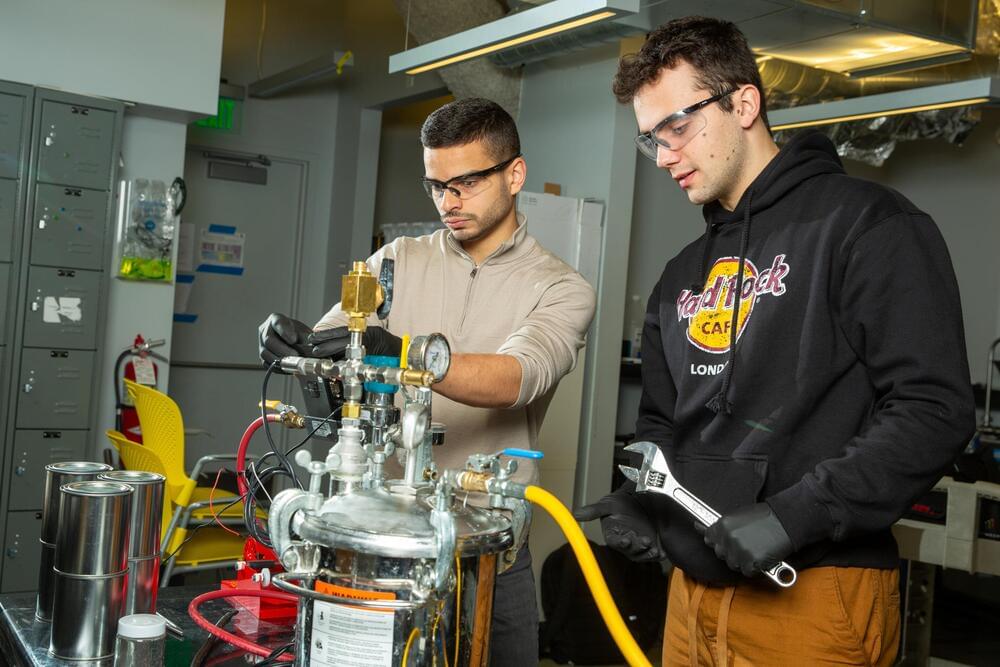Jul 28, 2024
Solar flare eruption breaks records for sun’s current cycle
Posted by Genevieve Klien in category: futurism
The X14-class solar flare, which erupted from the opposite side of the sun, was the most powerful of this solar cycle so far.
The X14-class solar flare, which erupted from the opposite side of the sun, was the most powerful of this solar cycle so far.
Grasping the precise energy landscapes of quantum particles can significantly enhance the accuracy of computer simulations for material sciences. These simulations are instrumental in developing advanced materials for applications in physics, chemistry, and sustainable technologies. The research tackles longstanding questions from the 1980s, paving the way for breakthroughs across various scientific disciplines.
An international group of physicists, led by researchers at Trinity College Dublin, has developed new theorems in quantum mechanics that explain the “energy landscapes” of quantum particle collections. Their work resolves decades-old questions, paving the way for more accurate computer simulations of materials. This advancement could significantly aid scientists in designing materials poised to revolutionize green technologies.
The new theorems have just been published in the prominent journal Physical Review Letters. The results describe how the energy of systems of particles (such as atoms, molecules, and more exotic matter) changes when their magnetism and particle count change. Solving an open problem important to the simulation of matter using computers, this extends a series of landmark works commencing from the early 1980s.

Utilizing data from NASA ’s Fermi Gamma-ray Space Telescope, researchers discovered a unique energy peak in the aftermath of the brightest Gamma-Ray burst ever seen, suggesting the annihilation of electrons and positrons. This finding provides new insights into the behavior of cosmic jets and the extreme conditions following such bursts.
In October 2022, astronomers were stunned by what was quickly dubbed the BOAT — the brightest-of-all-time gamma-ray burst (GRB). Now an international science team reports that data from NASA’s Fermi Gamma-ray Space Telescope reveals a feature never seen before.
Caltech engineers have introduced an innovative metasurface that manipulates light to provide multiple communication channels at optical frequencies.
This technology promises to enhance data transmission in various fields including space communications and LiDAR, moving beyond traditional electronic methods and offering substantial bandwidth improvements.
Revolutionizing Wireless Communication With Metasurfaces.
These advancements in AI technologies are happening in China despite the stringent measures that the U.S. is placing against its technological ambitions. The bans and embargoes on high-end chips Washington has placed on Beijing meant that Chinese companies have difficulty sourcing Nvidia’s latest, most potent AI processors. While China is hard at work trying to catch up on the hardware side of things, many experts believe it’s still at least a decade away from achieving parity with the United States.
It’s evident, though, that Chinese tech firms can catch up on the software side despite the hardware bans. Nevertheless, the White House wants to change that with a bill in the U.S. Congress that would give the American government more control over limiting the export of American AI code. Some parties are trying to limit the development of open-source AI tech to stop Chinese companies from using it, but doing so might do more harm than good for the U.S.
Clément Delangue, the CEO of Hugging Face, a firm that lets its users share its open-source AI projects, said, “Open-source AI is the foundation of AI development,” referring to how the collaboration of researchers and organizations in the U.S. allowed it to become the world leader in AI, “and it looks like China could do the same thing.”

A sustainable source for clean energy may lie in old soda cans and seawater. MIT engineers have found that when the aluminum in soda cans is exposed in its pure form and mixed with seawater, the solution bubbles up and naturally produces hydrogen—a gas that can be subsequently used to power an engine or fuel cell without generating carbon emissions. What’s more, this simple reaction can be sped up by adding a common stimulant: caffeine.
In a study appearing today in the journal Cell Reports Physical Science, the researchers show they can produce hydrogen gas by dropping pretreated, pebble-sized aluminum pellets into a beaker of filtered seawater. The aluminum is pretreated with a rare-metal alloy that effectively scrubs aluminum into a pure form that can react with seawater to generate hydrogen. The salt ions in the seawater can in turn attract and recover the alloy, which can be reused to generate more hydrogen in a sustainable cycle.

Construction has begun on what will be the world’s largest underwater road and rail tunnel connecting Denmark and Germany, as Newsweek reported.
The tunnel, which is a major component of the European Union’s Scandinavian-Mediterranean corridor plan, runs beneath the Fehmarn strait for more than 11 miles and aims to cut travel times between the two countries. A 45-minute ferry ride may soon be reduced to a quick seven-minute train commute.
In this article, Roman Ponomarenko, sound designer and composer with 20+ years of professional experience, explores the transformative potential of AI in sound design and what this means for the future of music.
Artificial intelligence (AI) is already making significant progress in music and sound design. However, will the sophisticated AI of the future eventually replace human professionals in these fields? Navigating such a complex issue proves to be quite challenging, as AI brings forth a mix of exciting opportunities and daunting challenges.
Juvenile and adult skeletons of Middle Jurassic Krusatodon from the Isle of Skye, Scotland, show that this mouse-sized mammaliaform had longer development and lifespan than modern mammals of similar mass.
